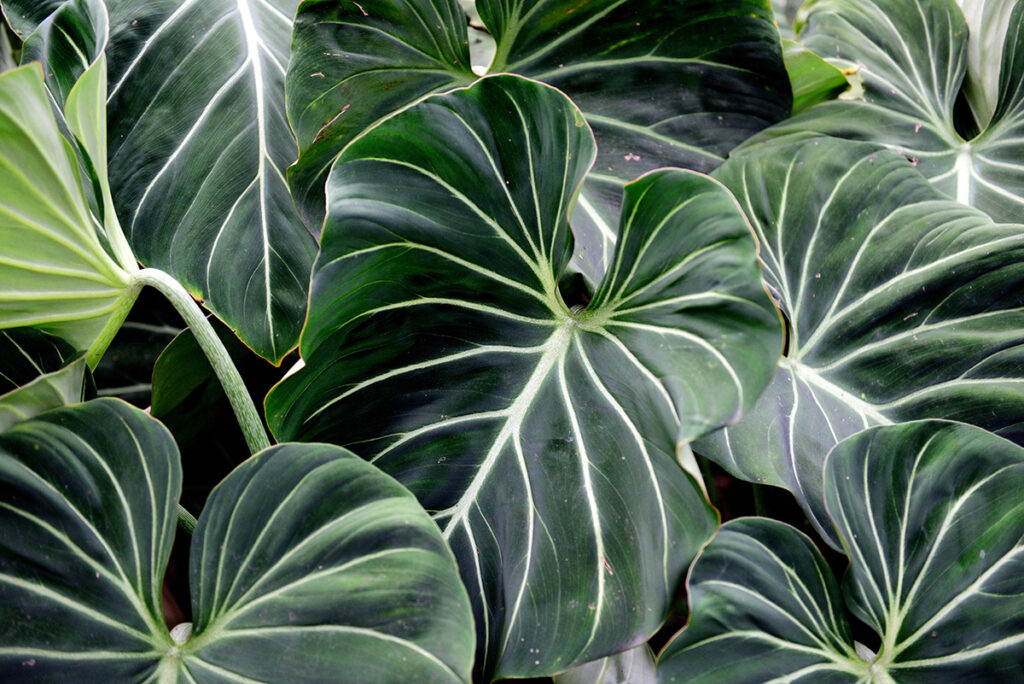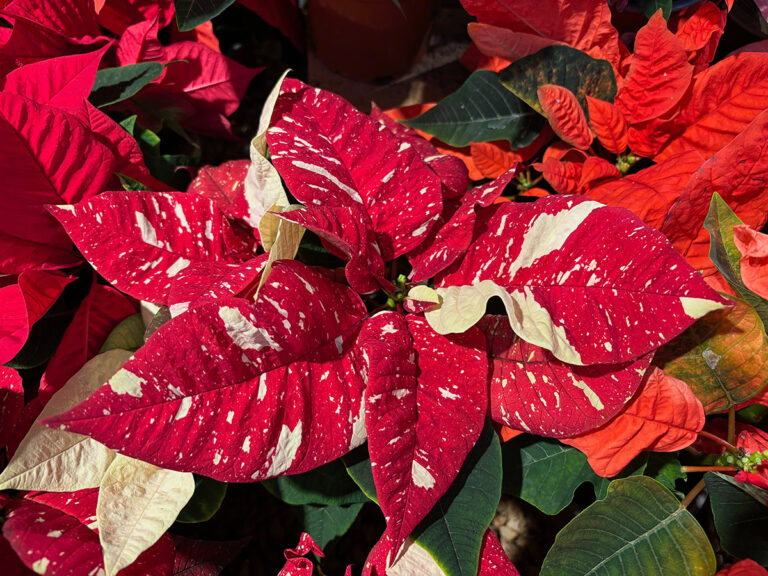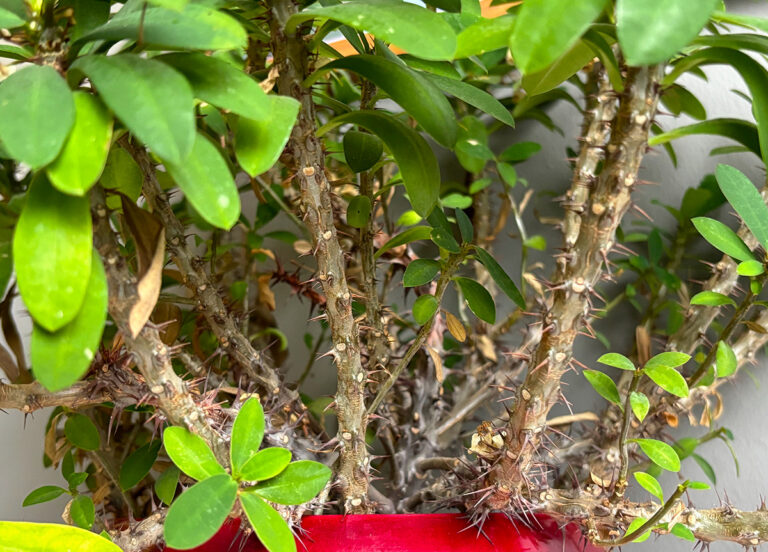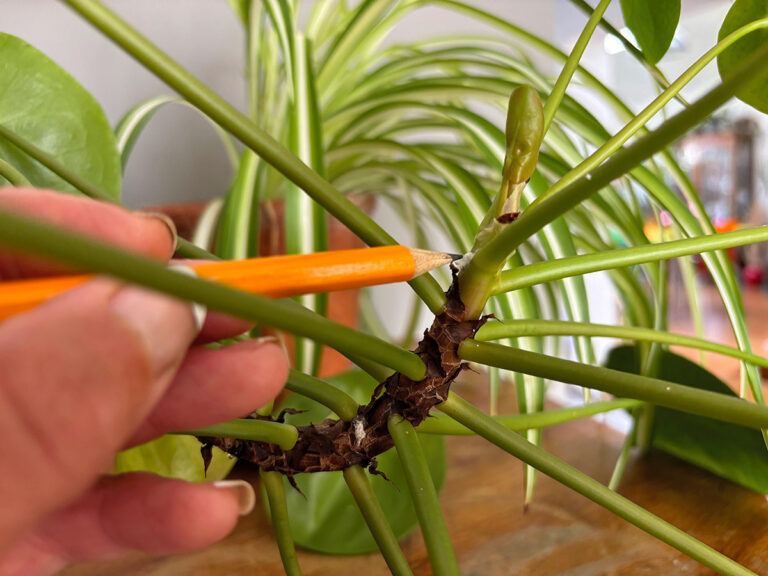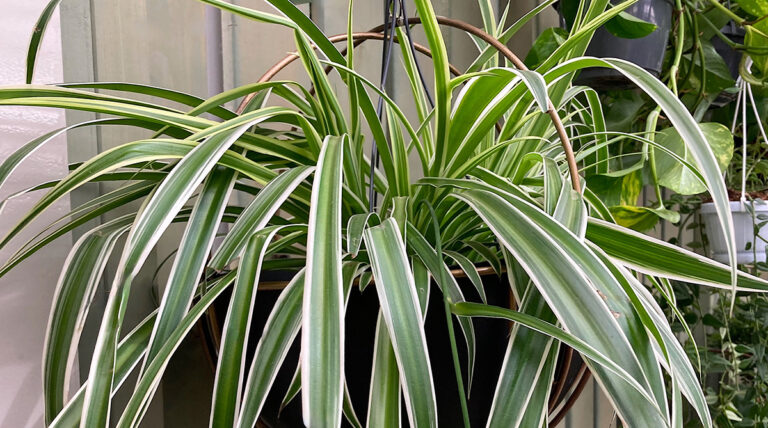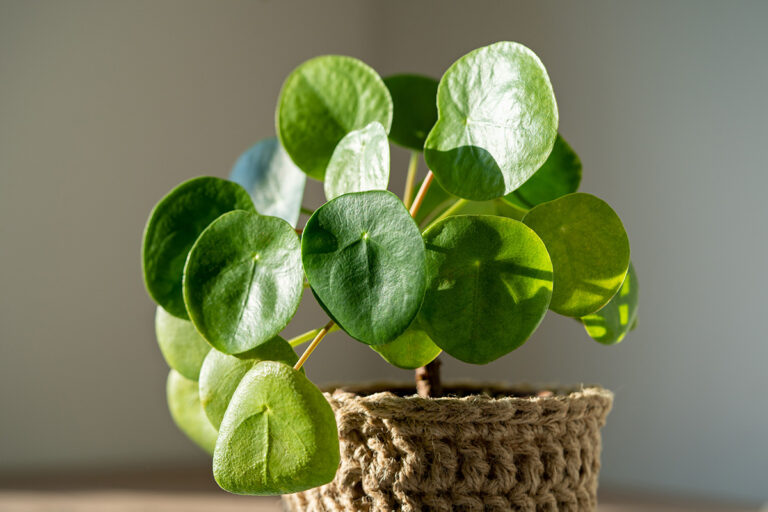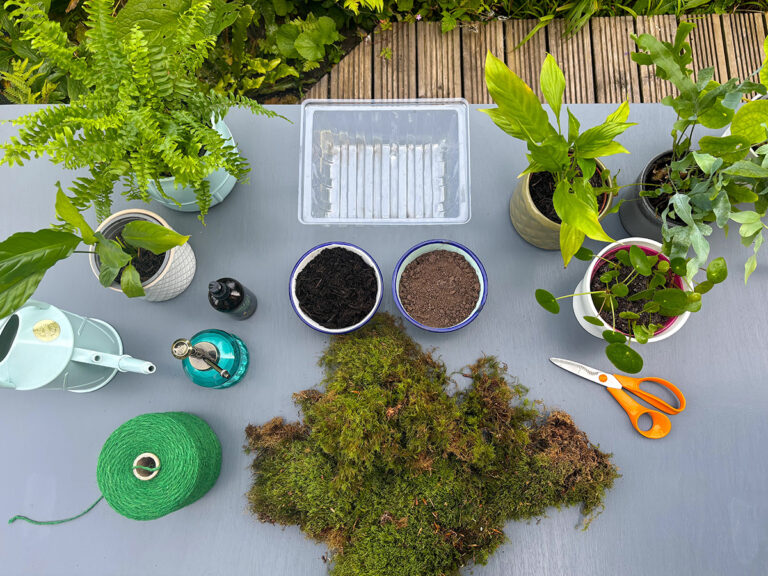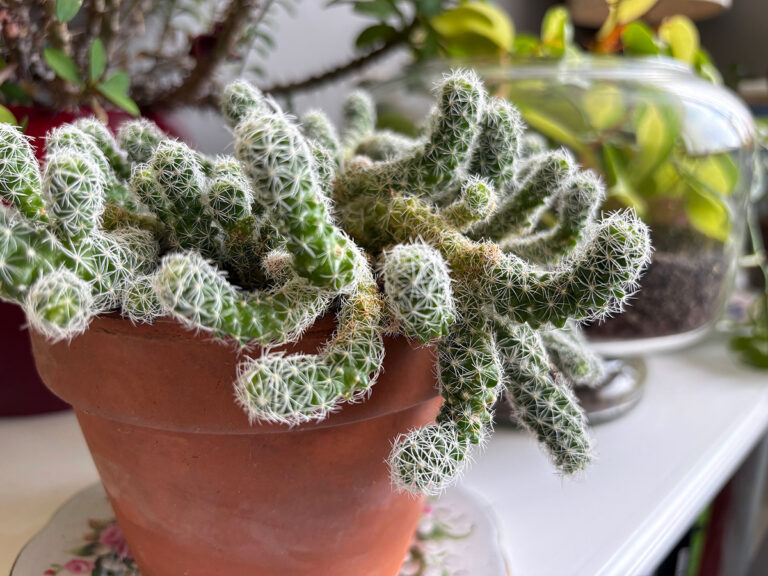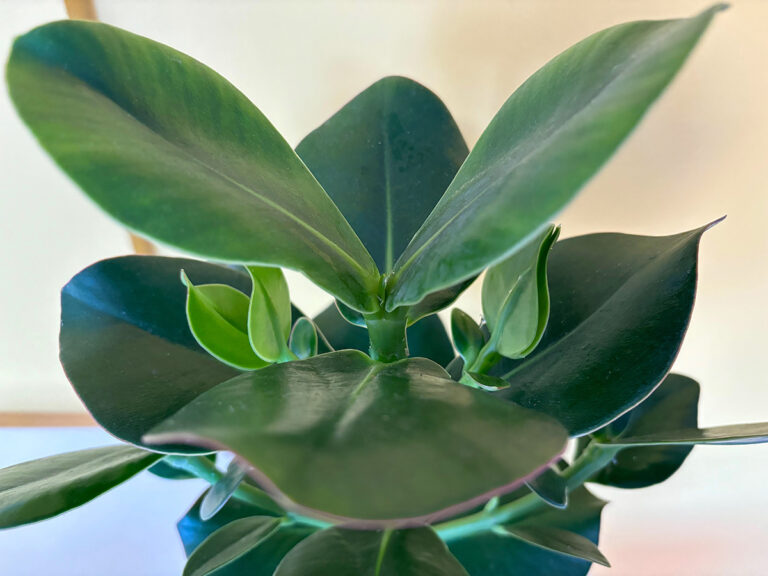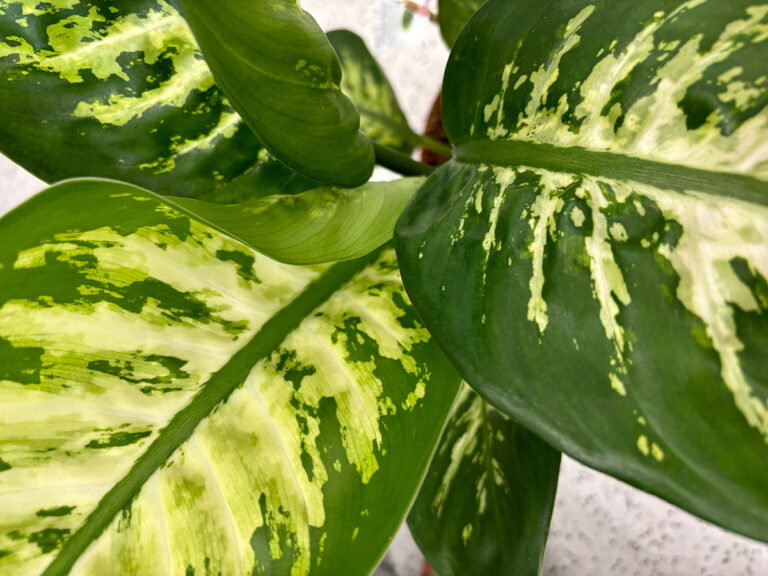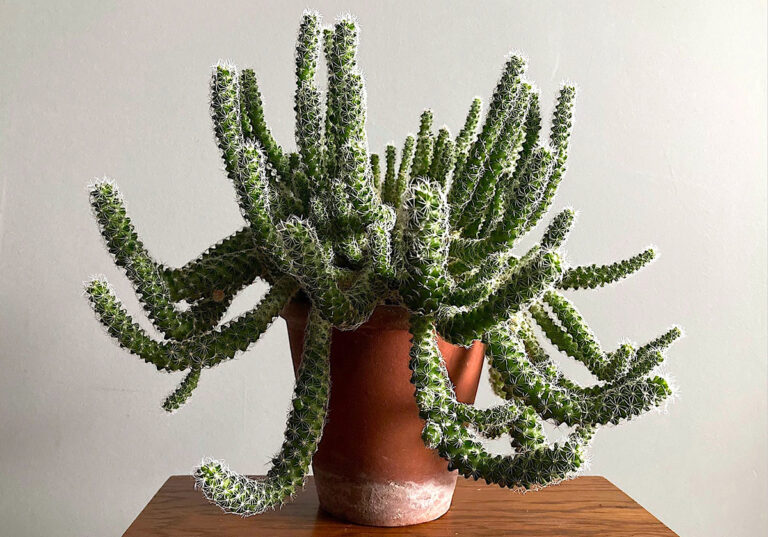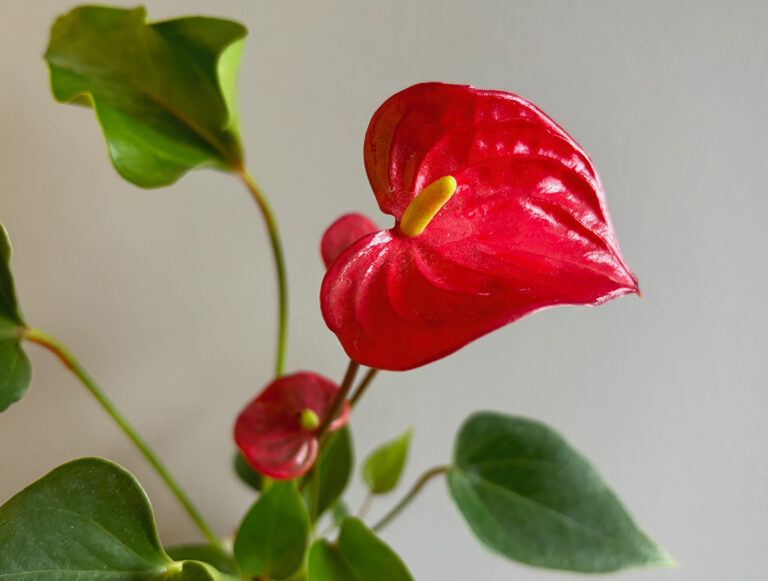Huge arrowhead-shaped leaves firmly place Alocasia as a striking foliage houseplant. These glossy, rubber-like leaves give the plant an almost plastic look but don’t let that put you off; these easy to care for plants are an absolute asset to any houseplant collection.
Alocasia are part of the Araceae family and are commonly known as African mask plants or Elephant Ears due to their voluminous size with dark green leaves that contrast against creamy-coloured veins. Their leaves have evolved in size to cope with growing under tree canopies competing for light in the tropical and subtropical regions of Asia and Eastern Australia and their thick stems store moisture.
There are over 90 species of this tuberous rhizome flowering perennial with A. × amazonica ‘Polly’ being one of the most popular houseplant choices. Help your houseplant achieve healthy heights by getting their indoor growing conditions right.
Light
Alocasia favour a bright spot with indirect sunlight but can tolerate some shade, they just won’t perform so well. They thrive near well-lit windows but avoid direct sunlight which can cause leaf scorch. Get the lighting right and your Alocasia will grow profusely and regularly throw out glorious new leaves.
Water
Alocasia can suffer from root rot if allowed to sit in soggy soil but equally they are not fans of drying out completely so take a judgement call on watering just when your soil appears to be on the verge of drying out to keep it moist. Give the plant a good soak, either watering the compost from the top, at the base or submerge in a bucket of tepid rainwater and let the excess water drain away. In the summer, water weekly and reduce to every couple of weeks in winter.
Temperature
Alocasia love humidity so a steamy bathroom or kitchen is perfect; keep temperatures around 16-29°C (60-85°F). You can give your houseplant a holiday in the summer and place it outdoors as long as temperatures allow just keep away from cold draughts and scorching summer sun.

Group pots together to increase humidity, stand on a tray of damp pebbles and spray regularly with a fine mist of Plantsmith Perfecting Houseplant Care Mist, which will not only provide moisture but also essential nutrients, or mist with rainwater. Misting will temporarily increase humidity and compensate for the dry air in our homes. Move Alocasia away from radiators in winter.
Soil
Alocasia prefer slightly acidic conditions so use an ericaceous compost or make your own composition with peat-free compost, orchid bark or coir, sand and perlite to create a balance of organic matter which drains easily. A good mix will avoid compaction and help air circulation around the roots by keeping soil light and aerated. Repot Alocasia every 18 months or so; this is a good opportunity to refresh the soil.
Fertiliser
Feed every two to four weeks to keep Alocasia foliage healthy and green. As with all potted plants, houseplants rely entirely on us to feed them so ensure the formula you give them is in tune with houseplant’s needs.
Houseplants require a weaker formula than our outdoor plants, in fact over fertilising can be detrimental to houseplant health. Plants carry out all their chemical reactions in solution so applying a soluble food stops the plant wasting energy converting pelleted plant food into a useable form.
Try Plantsmith’s Fortifying Houseplant Feed & Tonic which has been blended to provide a perfect balance of iron, magnesium, potassium, kelp and essential macro and micro nutrients to encourage strong growth. Most importantly Plantsmith’s Fortifying Houseplant Feed & Tonic contains the optimum ratio of nutrients for houseplants.
To apply, shake the bottle so all nutrients are evenly mixed then add 5 ml (approx. 4 pumps) from the 500ml bottle or dilute one pipette from a 100ml bottle into a litre of tepid rainwater and water onto soil.
Flowering
Alocasia do not often flower indoors but in optimum conditions with temperatures consistently around 18-29°C (65°F to 85°F) you may find they produce inflorescence which are reminiscent of arum lilies comprising of a tall, narrow spadix with a modified leaf known as the spathe rising from a floral chamber.
There is always debate about whether to cut these inflorescence off to concentrate energy to the main plant and foliage, but personally, if you’ve managed to grow a flower, I would enjoy the show and simply remove it once it has faded.
Problem Solver
Leaves turning yellow
Yellowing leaves could be due to overwatering. Do not let your plant sit in water for long periods of time. Once you have watered your plant, allow it to drain through onto a saucer and discard sitting water.
Brown edged leaves
Dry soil and low humidity can cause your Alocasia to develop brown edges on their foliage. If this happens move your plant to a more humid location in the house, step up your misting regime and water a bit more regularly.
Leaf spots
Alocasia are sensitive to tap water minerals which can cause leaf spots so use rainwater whenever you can. Neutralise tap water by leaving a pan of water uncovered for 24 hours, alternatively if you cannot wait 24 hours then boil tap water for 15 minutes and let it cool before using.
Dull leaves
Keep your foliage dust free and healthy with Plantsmith’s Beautifying Leaf Shine Spray. This all-natural plant spritz will gently clean, nourish and leave your plant’s leaves shining.
Prune out damaged or dead leaves to promote new growth.
Make sure plants have good ventilation and humidity.
Be aware Alocasia are toxic to cats and dogs if eaten so keep out of harms way. Alocasia contain needle-like crystals, calcium oxalate, which are produced as a defence mechanism to protect the plant from being eaten.
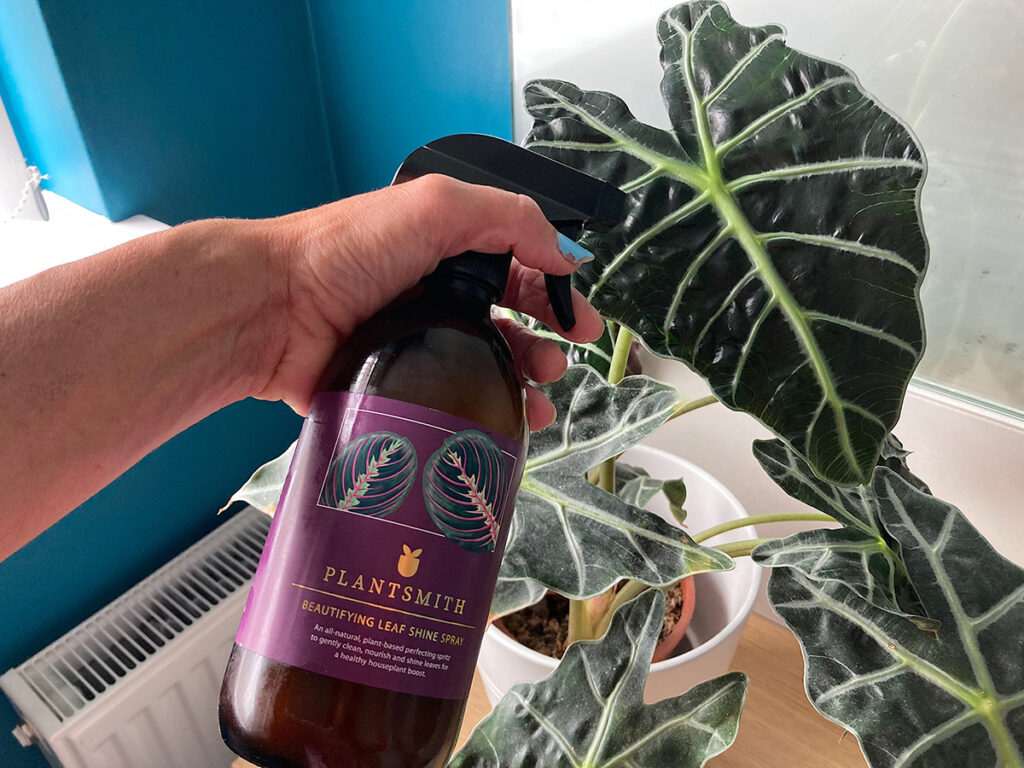
Pests
I find Alocasia are not overly prone to pest attacks but to ensure you do not attract unwanted visitors like spider mites, mealy bugs and aphids, use Plantsmith’s Protecting Bug Control Spray across the foliage. This protective spray blends natural surfactants alongside iron chelate, manganese chelate and magnesium which will help boost the plant’s vigour. This 100% vegan, natural formula deters pests as well as providing your plant with nutrients.
If fungus gnats are a problem then treat with a biological control. Water the soil with parasitic nematodes, Steinernema feltiae and pop yellow fly traps in pots to attract the adult flies. This process will break the fungus gnats’ life cycle; it may need a few applications but your plants should end up fly-free.
Propagation
Alocasia propagation is very straightforward by division. Take your plant out of its pot and tap away the soil to expose roots and reveal the individual stems. Tease apart the roots gently to separate the plants then pot on your new baby plant in fresh compost in a slightly larger pot than the root system.
Fun Fact
Alocasia actually drip droplets of mineral-rich water from their leaves; this is a natural process which usually happens at night and is known as guttation. It can be a sign of over-watering.
In their native environment, Alocasia can grow very tall and so legend has it this plant was the inspiration for the children’s fable Jack and the Beanstalk.
